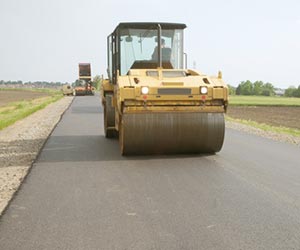Aggregates comprise about 90 – 95% by weight and 75 – 85% by volume of the average asphalt mix. The properties of the final asphalt product are greatly affected by the grading of the aggregate.
- Coarse Aggregate is material retained on the #8 sieve (2.36 mm and larger).
- Fine Aggregate is material passing through the #8 sieve but retained on the #200 sieve ( 0.075 mm and larger)
- Mineral Filler is the small, basically irrelevant material passing through the #200 sieve.
Aggregate Grading
Normally a table of “percent passing” ranges is specified for the standard ASTM sieve sizes. On the jobsite, or more accurately in the gravel pit, the aggregate is sieved to provide the percent passing for each sieve size, which is compared to the specs.
The maximum size of the aggregate is determined from the smallest sieve through which 100% of the aggregate passes. The nominal maximum size is designated as the largest sieve that retains some (but not more than 10%) of the aggregate.
Dense graded mixtures contain enough large, medium and small aggregates to ensure little void space within the final mix. Gap graded mixtures contain many large and small sizes, but little medium size. They are used extensively in Superpave asphalts and stone matrix work.
Aggregate grading can be affected by stockpile handling, cold-feed proportioning, degradation at impact points, dust collection, the addition of baghouse fines to the mix, and many other factors. Aggregates can become segregates in transport as well as contaminated by other material in adjacent stockpiles.
Lift Thickness
Generally, the minimum lift thickness during placement should be at least 3 times the maximum aggregate size.

Speak Your Mind